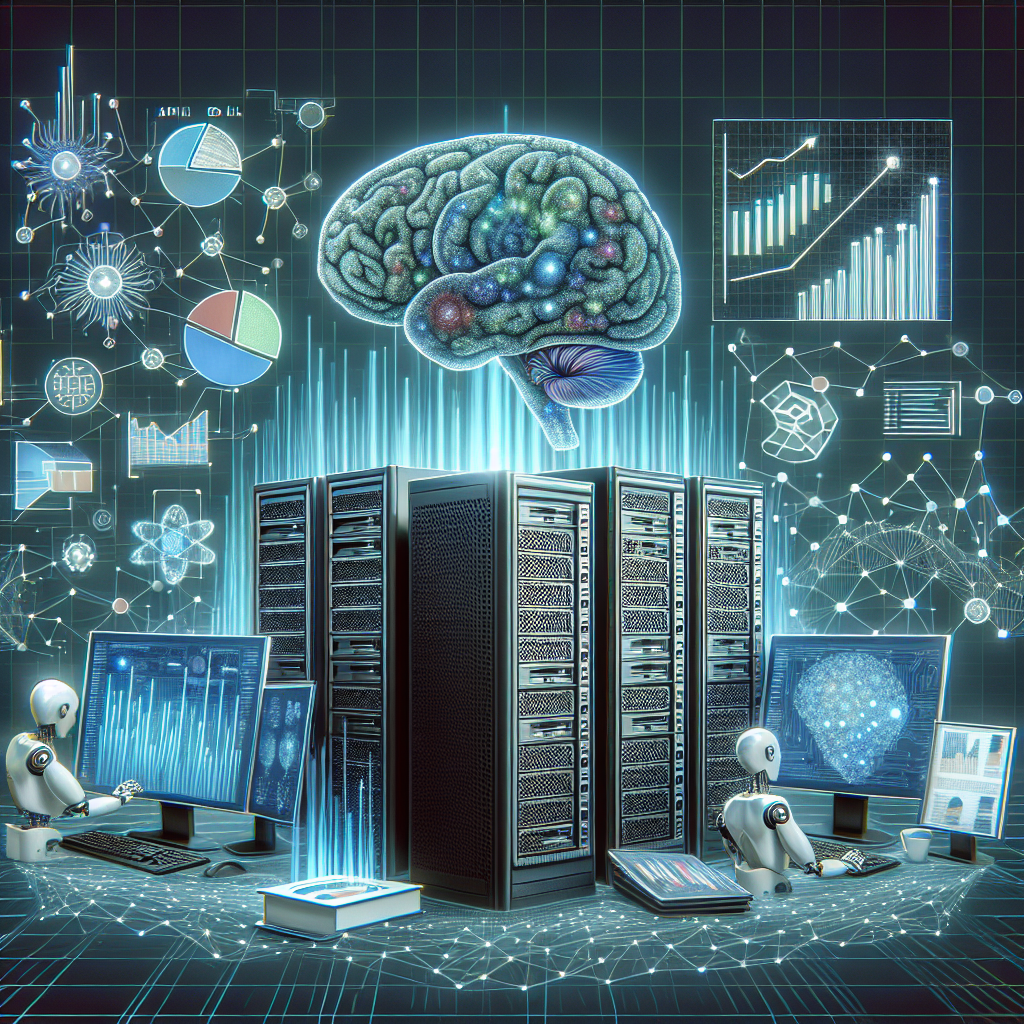Artificial Intelligence (AI) is revolutionizing the way businesses operate, and one area where its impact is particularly significant is in business intelligence practices. Business intelligence (BI) is the process of collecting, analyzing, and presenting data to help organizations make informed decisions. With the help of AI, businesses can now leverage advanced analytics and machine learning algorithms to gain deeper insights from their data, leading to more strategic decision-making and competitive advantage.
AI-powered BI tools are able to process and analyze vast amounts of data at speeds that were previously unimaginable. This allows businesses to uncover patterns and trends in their data that may have gone unnoticed, and to make predictions about future outcomes with a high degree of accuracy. AI can also automate many of the tasks involved in the BI process, such as data preparation, visualization, and reporting, freeing up valuable time for analysts to focus on more strategic tasks.
One of the key ways in which AI is reshaping BI practices is through the use of natural language processing (NLP) and natural language generation (NLG) technologies. These technologies enable users to interact with BI tools using everyday language, making it easier for non-technical users to access and understand complex data. For example, users can ask a question in plain English and receive a detailed analysis in response, without needing to know how to write complex queries or analyze data themselves.
AI is also enabling businesses to move beyond traditional BI tools and embrace more advanced analytics techniques, such as predictive analytics and prescriptive analytics. Predictive analytics uses historical data to forecast future trends and behaviors, while prescriptive analytics goes a step further by recommending actions that businesses can take to achieve their goals. By incorporating AI into their BI practices, businesses can gain a deeper understanding of their customers, markets, and operations, and make more informed decisions about how to drive growth and profitability.
Another way in which AI is reshaping BI practices is through the use of AI-powered data visualization tools. These tools use machine learning algorithms to automatically generate interactive visualizations that highlight key insights and trends in the data. This makes it easier for users to explore and understand their data, and to communicate their findings to others in a meaningful way. AI-powered data visualization tools can also help businesses identify outliers and anomalies in their data, enabling them to take proactive measures to address potential issues before they escalate.
In addition to improving the speed and accuracy of data analysis, AI is also helping businesses to overcome some of the challenges associated with traditional BI practices. For example, AI can help businesses to deal with the increasing volume, velocity, and variety of data that they are now faced with, by automating many of the tasks involved in data processing and analysis. AI can also help businesses to identify and prioritize the most important insights in their data, by using machine learning algorithms to analyze patterns and trends in the data and highlight areas of interest.
Overall, AI is reshaping BI practices by enabling businesses to leverage advanced analytics and machine learning algorithms to gain deeper insights from their data, automate many of the tasks involved in the BI process, and overcome the challenges associated with traditional BI practices. By incorporating AI into their BI practices, businesses can make more informed decisions, drive growth and profitability, and gain a competitive advantage in today’s data-driven world.
FAQs:
1. How can AI improve the accuracy of business intelligence practices?
AI can improve the accuracy of business intelligence practices by using advanced analytics and machine learning algorithms to analyze patterns and trends in the data, and make predictions about future outcomes with a high degree of accuracy. AI can also automate many of the tasks involved in the BI process, such as data preparation, visualization, and reporting, reducing the likelihood of human error.
2. How can AI help businesses to overcome the challenges associated with traditional BI practices?
AI can help businesses to overcome the challenges associated with traditional BI practices by automating many of the tasks involved in data processing and analysis, such as data preparation, visualization, and reporting. AI can also help businesses to deal with the increasing volume, velocity, and variety of data that they are now faced with, by using machine learning algorithms to analyze patterns and trends in the data and highlight areas of interest.
3. How can AI-powered data visualization tools help businesses to understand their data better?
AI-powered data visualization tools use machine learning algorithms to automatically generate interactive visualizations that highlight key insights and trends in the data. This makes it easier for users to explore and understand their data, and to communicate their findings to others in a meaningful way. AI-powered data visualization tools can also help businesses to identify outliers and anomalies in their data, enabling them to take proactive measures to address potential issues before they escalate.
4. What are some examples of AI-powered BI tools that businesses can use?
Some examples of AI-powered BI tools that businesses can use include Tableau, Qlik Sense, Power BI, and Looker. These tools use advanced analytics and machine learning algorithms to help businesses analyze their data, gain deeper insights, and make more informed decisions.
5. How can businesses incorporate AI into their BI practices?
Businesses can incorporate AI into their BI practices by investing in AI-powered BI tools, hiring data scientists and analysts with expertise in AI and machine learning, and training existing staff on how to use AI-powered BI tools effectively. By leveraging AI in their BI practices, businesses can gain a competitive advantage and drive growth and profitability in today’s data-driven world.

